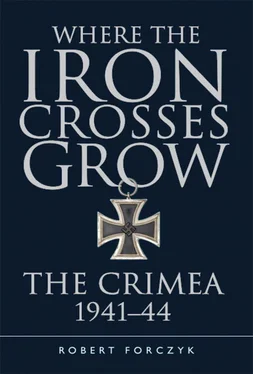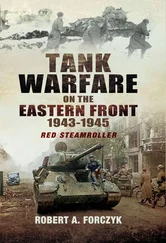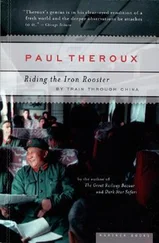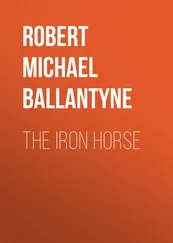By the evening of October 19, the 51st Army was near broken and Kuznetsov had lost control over the battle. However, the first element of the Coastal Army, Colonel Dmitri I. Tomilov’s 157th Rifle Division, was marching up from Sevastopol and would soon be available for a counterattack. Kuznetsov planned to fling the 157th Rifle Division at the 73. Infanterie-Division’s salient at Ishun, supported by the remainder of Batov’s two dismounted cavalry divisions. General-Major Ivan Y. Petrov, commander of the Coastal Army, was now subordinate to Kuznetsov but doubtless chagrined that one of his best units would be committed into action piecemeal in order to relieve the 51st Army’s situation. On the morning of October 20, two regiments of Tomilov’s 157th Rifle Division, supported by 122mm howitzer fire, attacked Ishun from the southeast while Batov’s cavalrymen attacked from the southwest. Initially, the attack went well and Bieler’s exhausted troops had their hands full trying to hold off a fresh Soviet division supported by Baranov’s T-34s. The 73. Infanterie-Division gave ground and evacuated Ishun, while conducting a fighting delay. The commander of the 2. Batterie from Sturmgeschütz-Abteilung 190, Oberleutnant Hartmann, was killed attempting to hold Ishun. However, it was now the Soviet troops who were exposed in the open, and the bombers of Fliegerkorps IV, plus Zuckertort’s artillery, mercilessly pounded Tomilov’s division. A Luftwaffe air strike found Tomilov’s command post and bombed it, wounding him and much of his staff. The Soviet attack faltered and Bieler counterattacked, retaking Ishun and pushing the 157th Rifle Division back to the river. Heavy rain then brought the day’s fighting to a close, with little change in positions. Both sides continued to hack away at each other the next day, but with no major moves.
The Stavka was shocked to find out that Kuznetsov had lost the Ishun position so quickly, and following his loss of Perekop it was clear that his skills at battle command were not up to the task of holding the Crimea. A special Stavka representative was sent to the Crimea, who relieved Kuznetsov of command on the evening of October 22. Amazingly, the Stavka decided to put the navy in charge of defending the entire Crimea, and Vice-Admiral Gordey I. Levchenko was put in command of all Soviet ground, air, and naval forces in the Crimea. For all his faults as a commander, Kuznetsov had a better understanding of the situation at Ishun than Levchenko, who had been Stavka’s naval representative at Odessa. Levchenko, who had been a crewman on the cruiser Aurora during the storming of the Winter Palace in 1917, had impeccable Soviet credentials, but had never commanded troops in ground combat before, and was not familiar with the Ishun position. Whereas Kuznetsov had recognized that the 51st Army was approaching the end of its rope, and recommended retreating to another blocking position, Levchenko dutifully followed his instructions from the Stavka to keep attacking and restore the original defensive line.
Hansen’s LIV Armeekorps was near the end of its infantry strength, so Manstein allowed his forces to temporarily shift to the tactical defense while the fresher 132. Infanterie-Division moved up to the front. Manstein had also pleaded with Heeresgruppe Süd for more help from the Luftwaffe, since Zuckertort’s artillery was running out of ammunition. Oberst Mölders sent all three of his fighter Gruppen in a sweep over the Perekop on October 23 and caught the VVS-ChF by surprise. A squadron from III./JG 52 intercepted six Pe-2 bombers and four Yak-1 fighters attacking the positions of the 46. Infanterie-Division near the Bromide Factory on Lake Krasnoe – shooting down all the bombers and three Yaks for the loss of one Bf-109. On the same day, Hauptmann Gordon Gollob claimed another three MiG-3 fighters. All told, Mölders’ fighters destroyed 23 fighters and six bombers for the loss of one of their own aircraft, effectively breaking the VVS-ChF’s control over the Perekop. [12] Bergström and Mikhailov, Black Cross/Red Star, Volume 2 , pp. 225–226.
Levchenko was not able to organize a large-scale counterattack until the morning of October 24, by which point his air support was gone. He decided to base his effort on Petrov’s newly arrived 25th and 95th Rifle Divisions, both heavily depleted from months of fighting at Odessa, plus the remaining combat-effective elements of the 51st Army, now led by Batov. The Soviets attacked the 73. Infanterie-Division’s positions near Ishun with massed infantry and a few T-34s, but negligible artillery support. Hansen’s frontline units were short of infantry but still had plenty of MG-34 machine-gun teams and 8cm mortar squads, which were used to shred the attacking waves. Overhead, the bombers of KG 27 wreaked havoc on the Red Army formations, and probably destroyed the armored train Smyert’ fashizmu and damaged the Voykovets. Although Petrov’s infantry courageously advanced several miles into the teeth of concentrated German firepower, they could not break the defense and the attack failed. On October 25 Levchenko ordered Petrov to attack again, but the subsequent heavy losses were too much. Sensing weakness, the Germans waited until Petrov’s troops were spent and then committed the fresh 170. Infanterie-Division into a counterattack south of Ishun. The Soviet front began to collapse, and the 170. Infanterie-Division advanced over 4 miles. Soviet command and control disintegrated as Levchenko and Batov both decided to relocate their headquarters to the south but failed to inform Petrov.
On October 26, the initiative clearly shifted back to the Germans, and Manstein released the 132. Infanterie-Division to reinforce Hansen’s push to the south. Here and there, the Soviet defenses began to fall apart, and units began retreating without orders, although others continued to cling to strongpoints. Most of Batov’s 51st Army troops were retreating in disorder before the day’s end, although Petrov had better control over his troops and began a more disciplined withdrawal toward Simferopol on his own authority. Manstein had won the battle at Ishun, but at the exorbitant cost of 7,286 casualties, including 1,515 dead or missing. When the earlier battle at Perekop is included, Manstein’s AOK 11 suffered over 12,000 casualties – equivalent to an entire division – to break through Soviet defenses on the Perekop Isthmus. However, the Soviets had little to rejoice about, since the 51st Army and Coastal Army had lost about a quarter of their strength trying to hold the Perekop positions, including 16,000 prisoners taken around Ishun. Batov’s retreating 51st Army had very little remaining combat power, particularly after the loss of about 200 artillery pieces. Petrov’s Coastal Army was in better shape, since it arrived only in the later stages of the fighting for the Perekop, but it still lost 28,000 of its 80,000 troops.
____________
Manstein had intended to conduct his pursuit with the LSSAH Division, but since this unit was no longer under his command, he had to improvise. He formed a scratch motorized unit known as Brigade Ziegler under Oberst Heinz Ziegler, the chief of staff of XXXXII Armeekorps, to spearhead the pursuit of the defeated Soviet Coastal Army. AOK 11 provided Oberstleutnant Oskar von Boddien’s Aufklärungs-Abteilung 22, Major Vogt’s Sturmgeschütz-Abteilung 190, two bicycle-mounted reconnaissance companies, some motorized flak guns, and the army-level Panzerjäger-Abteilung 560 (equipped with 3.7cm Pak), but AOK 11 was surprisingly short of trucks due to heavy losses from Soviet air and artillery attacks in the crowded Perekop Isthmus. Instead, a good portion of the ad hoc brigade was composed of Romanian motorized cavalrymen from Colonel Radu Korné’s 6th Motorized Rosiori Regiment. [13] Ia, VII, Beilagenheft zum Kriegstagebuch Nr. 4, “ Gefechtsbericht der Brigade Ziegler, 28.10 – 7.11.41 ,” XXXXII Armeekorps, NAM (National Archives Microfilm), series T-314, Roll 1669, frame 409.
Korné was one of the few Romanian tactical leaders who had impressed the Germans in the early stages of Operation Barbarossa , and he was known for aggressive and rapid advances. Ziegler was instructed to push hard on Petrov’s heels in an effort to keep the Soviets on the run so that they did not stop to form a new line of resistance, but he clearly would not be able to capture a city such as Sevastopol with 2,000 lightly equipped motorized troops.
Читать дальше












